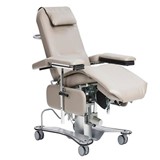Discover expert tips for setting up a medical clinic in Australia. From location to compliance, get actionable insights for your practice’s success.
Key Takeaways
- Location Matters: Choosing the right location is crucial for patient volume, accessibility, and long-term success. Aim for high foot traffic areas with easy access for your target demographic.
- Clinic Fit-Out: Design a clinic that meets compliance standards while promoting patient comfort. Create a functional, welcoming space with the right equipment and technology.
- Legal Protections and Insurance: Ensure you’re covered with professional indemnity, public liability, and other essential insurances. Protect your clinic legally with proper contracts and privacy policies.
- Healthcare Insurance and Billing: Understand how Medicare, private insurance, and billing systems work to ensure smooth financial operations and timely payments.
- Compliance and Regulations: Stick to Australian healthcare regulations, such as AHPRA guidelines and safety standards, to avoid costly fines or legal troubles.
Introduction
Starting a medical clinic is an exciting but challenging endeavour. In Australia, setting up a practice requires a clear understanding of the healthcare industry, strategic planning, and attention to detail. Whether you're opening a GP practice or a specialist clinic, the key to success lies in how well you manage the setup process, ensuring that everything from the location to the compliance of your operations is spot on. This guide breaks down the essential steps you need to take to ensure your medical clinic starts off on the right foot and is positioned for long-term success.
Choosing the Right Location for Your Medical Clinic
The location of your clinic can make or break your success. When choosing a site, consider the following factors:
- Proximity to Target Demographics: Ensure the location is accessible to your target patient group. For example, if you're opening a pediatric clinic, consider being near schools or family-oriented neighbourhoods.
- Foot Traffic: High foot traffic areas can boost your visibility and attract more walk-in patients. Locations near shopping centres or main roads are prime spots.
- Competition: Research local competitors. Are there other similar clinics nearby? You need to ensure that your services meet a demand not overly saturated by other practices.
- Parking and Accessibility: Ensure the clinic is easily accessible for patients, with adequate parking spaces, public transport access, and facilities for those with disabilities.
A good location directly impacts your patient volume and, ultimately, the financial success of your clinic. Consider working with a property agent to find the most optimal space based on these factors.
Fit-Out Considerations: Designing a Functional and Compliant Clinic
The physical design of your clinic must strike a balance between aesthetics, functionality, and compliance with healthcare regulations. A well-planned fit-out promotes patient comfort, ensures safety, and improves the efficiency of operations.
Key Considerations for Your Clinic Fit-Out:
- Patient Comfort: Design a welcoming environment with comfortable waiting areas, private consultation rooms, and hygienic spaces. Consider lighting, furniture, and temperature control to enhance the patient experience.
- Compliance with Regulations: Your clinic must meet the standards set by AHPRA and other health bodies. Ensure that your design complies with regulations regarding space, hygiene, medical waste disposal, and infection control.
- Technology Integration: Incorporate technology that streamlines patient management, such as electronic health records (EHR) systems, appointment booking software, and telehealth setups. Ensure your IT infrastructure can support these systems securely.
- Staff Areas: Design spaces for staff that are functional and promote well-being, including break rooms, staff offices, and storage spaces for equipment and medical supplies.
A well-executed fit-out not only meets legal standards but also contributes to a better patient experience, setting your clinic up for success.
Legal Protections and Insurance for Your Clinic
Starting a medical clinic involves significant legal considerations, especially around insurance and professional indemnity. Protect your clinic from unexpected situations by obtaining the right types of insurance.
Key Insurance Types:
- Professional Indemnity Insurance: This protects you against claims of negligence or malpractice. It’s essential for any healthcare provider.
- Public Liability Insurance: Covers you in case a patient or visitor is injured on your property.
- Workers’ Compensation Insurance: Required by law, it covers employees in case of injury or illness.
- Cyber Liability Insurance: Given the rise of digital healthcare services, this insurance protects against data breaches and cyber threats.
Legal Considerations:
- Employment Contracts: Ensure you have clear employment contracts for all your staff, outlining terms of employment, roles, and responsibilities.
- Privacy Policies: Under Australian law, you need to comply with the Privacy Act 1988 to protect patient data. Ensure all your staff are trained on data privacy and confidentiality.
These legal protections ensure that your clinic operates smoothly and can protect you from significant financial and legal risks.
Understanding Healthcare Insurance and Billing
Efficient billing is essential to the financial health of your clinic. In Australia, healthcare billing is a complex process that involves Medicare, private health insurance, and out-of-pocket payments from patients.
Understanding Medicare:
Medicare provides subsidised healthcare services to Australian residents. As a medical provider, you’ll need to register with Medicare to bill for services like consultations and procedures. Be familiar with the Medicare Benefits Schedule (MBS), which lists all services covered under Medicare.
Private Health Insurance:
Patients with private health insurance may seek out-of-pocket coverage for additional services or treatments not covered by Medicare. Be sure to have a process in place for billing private health funds and verifying patient insurance details before appointments.
Efficient Billing Systems:
- Implement a billing system that tracks claims and payments.
- Offer digital payment options, including online payments and EFTPOS, for greater convenience.
- Understand and comply with Medicare’s strict billing guidelines to avoid overcharging or fraud.
With the right systems in place, managing billing and insurance claims can be efficient, helping you maintain cash flow and reduce administrative overhead.
Compliance and Regulations
Australia’s healthcare system is highly regulated, and clinics must comply with a range of national and state-specific laws. These regulations govern everything from infection control to patient privacy.
Key Regulations:
- AHPRA Registration: Ensure all medical practitioners are registered with the Australian Health Practitioner Regulation Agency (AHPRA) and meet continuing professional development (CPD) requirements.
- Workplace Health and Safety (WHS): Your clinic must adhere to WHS guidelines to protect both staff and patients. This includes having adequate safety procedures in place and maintaining a safe working environment.
- Infection Control: Implement infection control measures in line with national guidelines to prevent the spread of diseases, particularly in clinical settings. Regularly sterilise medical equipment, maintain clean environments, and monitor staff hygiene.
- Privacy Act 1988: You must ensure that patient records are kept confidential and secure under Australian privacy laws.
By staying up to date with these regulations, you protect both your clinic and your patients, and avoid the risk of costly fines and legal complications.
FAQ: Common Questions About Setting Up a Medical Clinic
- How much does it cost to set up a medical clinic in Australia?
The cost of setting up a medical clinic can range from $50,000 to $200,000, depending on factors like location, the size of the clinic, and the type of fit-out required. - What are the key regulations to follow when setting up a medical clinic?
You must comply with the AHPRA standards, National Safety and Quality Health Service Standards (NSQHS), and local council regulations. Licensing and zoning laws must also be observed. - How do I finance my medical clinic setup?
Many healthcare providers choose financing options, such as business loans or equipment financing, to help cover the cost of setting up their clinic. There are also government grants available for eligible businesses. - What is the best location for a medical clinic?
Ideal locations are those with high foot traffic, such as near shopping centres, residential areas, or public transport hubs. Regional areas are also a great option due to underserved populations. - How can I make my medical clinic stand out from the competition?
Invest in modern technology, provide exceptional customer service, and market your clinic through a professional website, social media, and local advertising. Positive online reviews will also enhance your clinic’s reputation.
Conclusion
Setting up a medical clinic is a significant undertaking that requires careful planning and attention to detail. By focusing on the essentials — choosing the right location, designing a compliant and functional fit-out, securing the right insurance, understanding billing processes, staying compliant with regulations, and building a great team — you can set your clinic up for success. Remember, the foundation of a successful clinic is not just about providing excellent healthcare but also about creating an environment that supports both your patients and your staff. By addressing these key areas early on, you ensure that your clinic thrives in the competitive Australian healthcare market.













-160x160-state_article-rel-cat.png)









